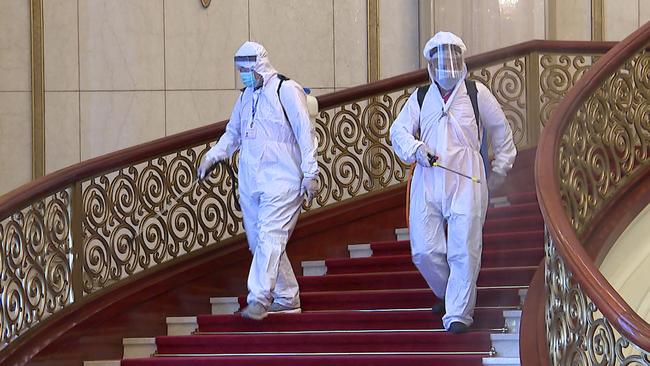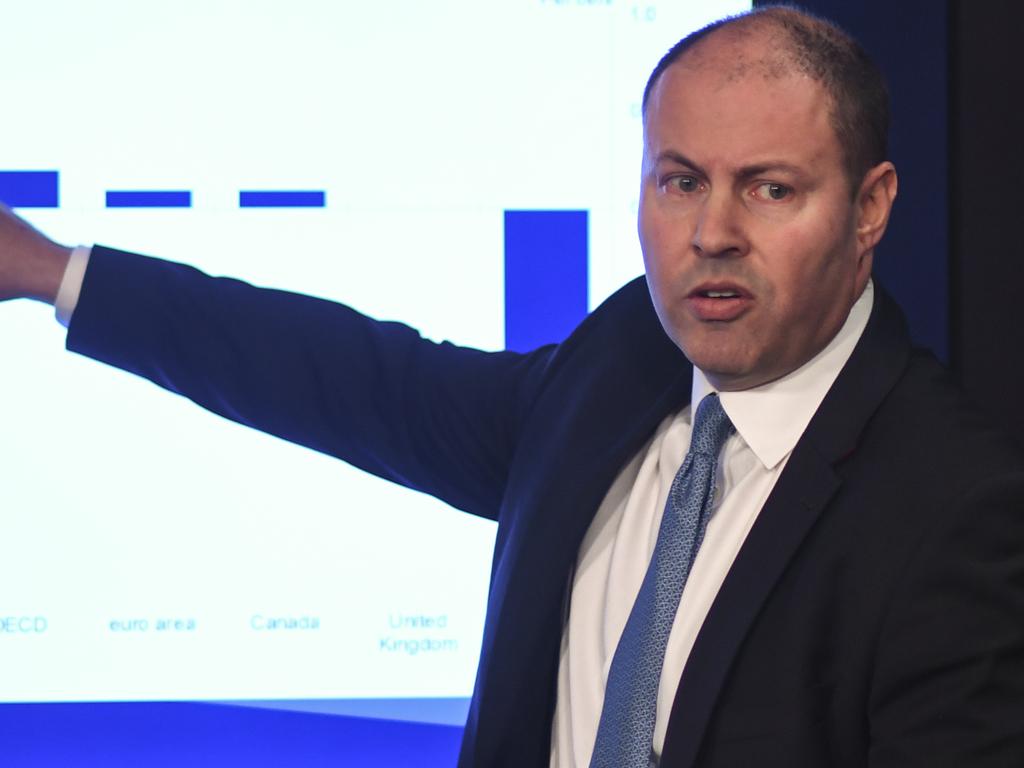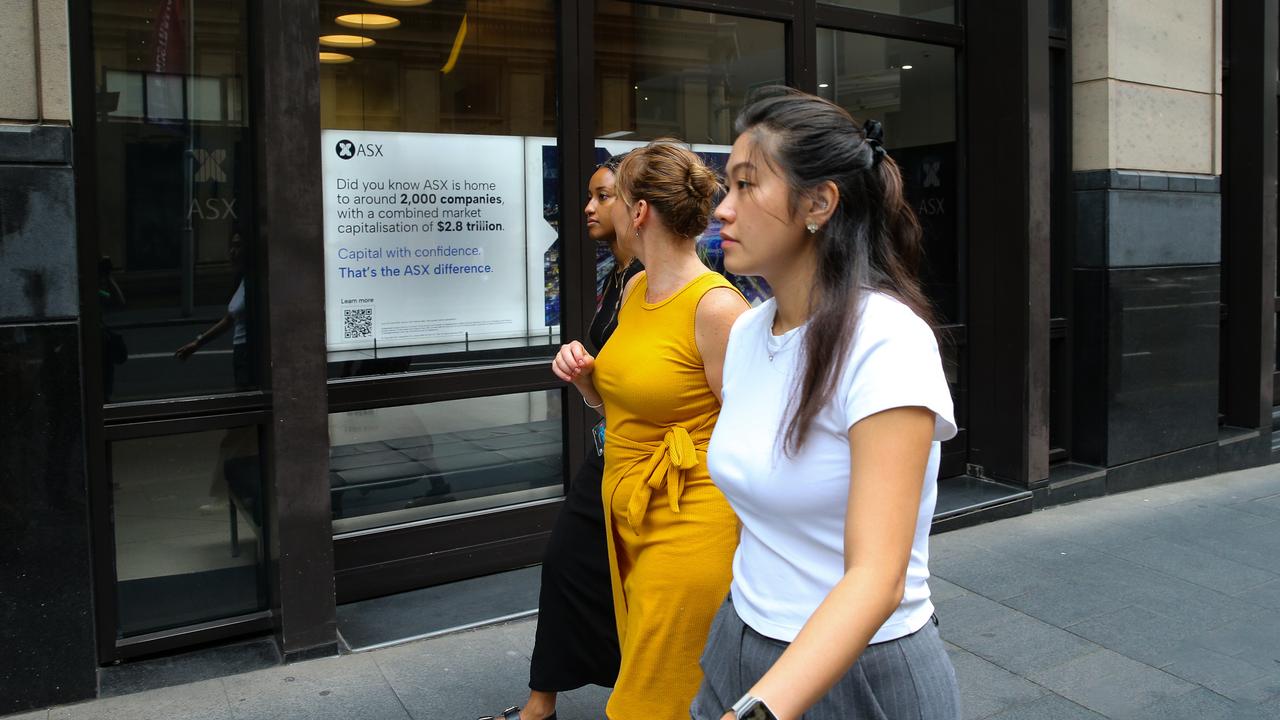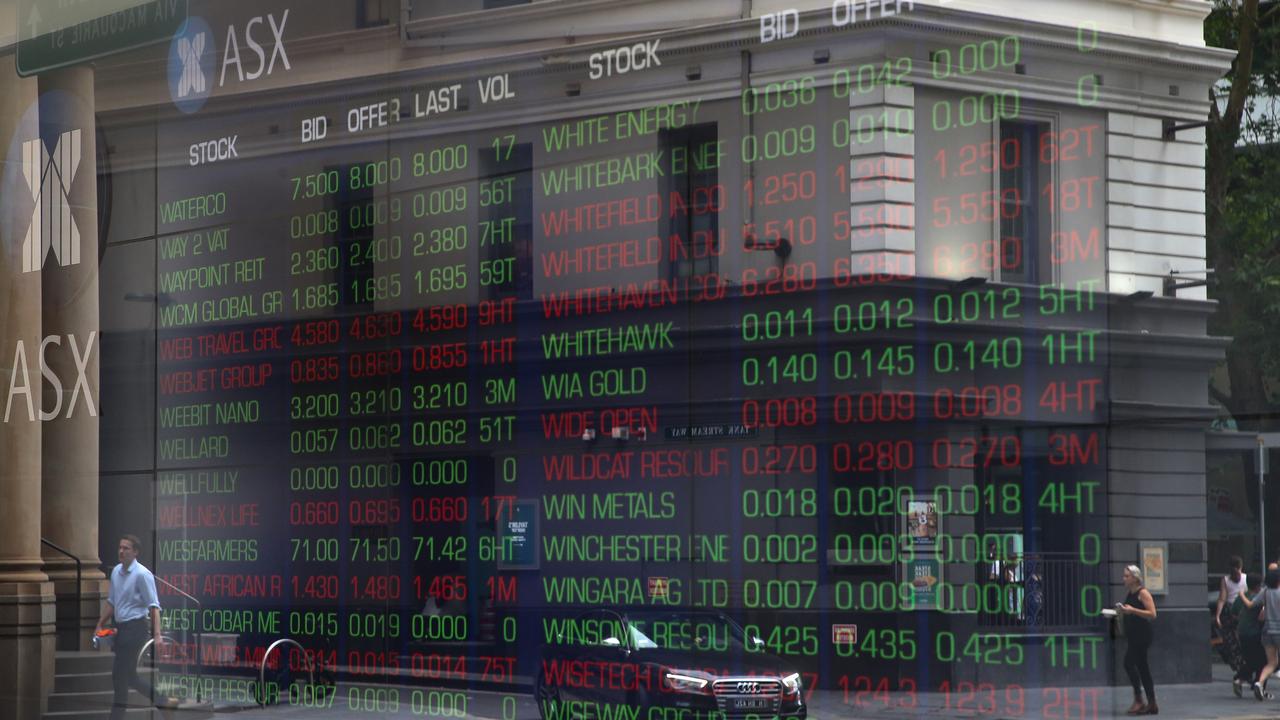The coming recession is written on toilet paper

Wednesday’s December quarter national accounts were a curiosity, irrelevant to the current state of play, except for one thing: they made it clear a recession is almost inevitable.
Any doubt about that, I would suggest, has been removed by the Great Toilet Paper Panic.
It would be funny if it wasn’t serious: for some reason the coronavirus has sparked a worldwide run on bog rolls, to the point where supermarket shelves are devoid of them.
Trolleys have been arriving at check-outs piled high; in Japanese toilets, they are being secured to the dispensers with bicycle locks; in the Sydney CBD the other day, a thief was caught exiting a 20-storey building with two garbage bags full of toilet rolls he had pilfered from each floor.
The global run on dunny paper highlights two serious sides to the pandemic: “just in time” supply chain management means that unexpected disruptions have a large, instant impact; and herd mentality has become a very powerful global force, possibly due to social media.
The fact it’s a global thing with little or no logic is surprising, showing that social communication, and therefore panic, is borderless, fluid and not necessarily rational.
And “just in time” supply, and therefore little or no stock, raises the fragility of the business world when it’s already fragile because of increased debt.
The Australian economy was also fragile, as shown by the December quarter national accounts, and not in a strong position to handle the crisis as the government claims it is.
Consumer spending growth of 0.4 per cent in the quarter underpinned the insipid GDP growth of 0.5 per cent. Net exports contributed 0.1 per cent.
Population growth last year was 1.6 per cent — 0.4 per cent per quarter, the same as the increase in consumer spending. No one spent any more — there were just more people spending.
The increase in population in 2019 was 381,600. Included in that were 268,000 temporary visas for Chinese people, of which 134,000 are students. And then there is tourism. Short-term visitors from China have been running at about 1.4 million a year.
In other words, most of Australia’s economic growth has been the result of extra people, not an increase in the productivity or wealth of the people already here. Most of the extra people aren’t coming now.
Apart from people, the growth has been the result of net exports, mainly to China, plus government spending funded by higher taxes that have been further hacking into household disposable income.
The collapse in arrivals from China, plus a fall in net exports on top of the existing weakness in domestic consumption, will ensure that March quarter GDP is negative.
The spread of coronavirus from China to the rest of the world will almost certainly make it two quarters in a row, and thus a recession, unless there is a very dramatic increase in government spending as well as tax cuts. That’s possible next week, but it’s probably too late.
That’s the trouble with relying on population growth as an economic management tool, as Australian governments have been doing for 13 years. It’s fine as long as everybody doesn’t get sick and stay home, or be quarantined.

So looking at the December quarter national accounts, and the pre-coronavirus migration and visitor statistics, it seems that a recession is inevitable. The only questions are how deep and prolonged it is, how much unemployment rises as a result, and whether there is an equity bear market.
If the pandemic fades during the northern summer maybe it will be a fairly shallow recession with limited impact. But that is probably the best that can be hoped for.
Meanwhile, the Reserve Bank went into this with two bullets in the gun, since the cash rate was 0.75 per cent and they’ve said that 0.25 per cent is effectively zero. One was fired on Tuesday, about a month into the recession, so there’s one bullet left.
That will probably be fired next month, at which point the RBA will be out of ammunition. RBA governor Philip Lowe has signalled that once 0.25 per cent is reached, unconventional policy will be used, which is assumed to mean some form of quantitative easing.
What that might involve is unclear, but in any case, quantitative easing is a flawed idea: apart from anything else, elsewhere in the world it’s aimed at reducing bond yields, which are falling anyway.

QE has increased asset prices in the US through lower bond yields, but the trickle down through a wealth effect of that has been limited. And with market interest rates now so low, it’s hard to see QE reducing them further.
Super-low interest rates — the US 10-year bond yield fell below 1 per cent this week for the first time — should mean that if the coronavirus pandemic turns out to be short and mild, and there is no recession, the bounce on sharemarkets will be dramatic.
On the other hand, a global recession caused by mass panic and simultaneous global supply and demand shocks will result in a severe bear market in equities.
There doesn’t seem to be a middle course for investors from here: things will either be great or terrible.
There is another characteristic of the coronavirus pandemic that seems to be significant: the death rate among those aged over 80 who get it is 15 per cent; for those below 40 it is virtually zero.
It looks like a disease that everyone gets but of which only old people die, and in much larger numbers than the flu.
If that pattern holds, the economics of it by the time the pandemic ends could be interesting.
Alan Kohler is the editor-in-chief of eurekareport.com.au






